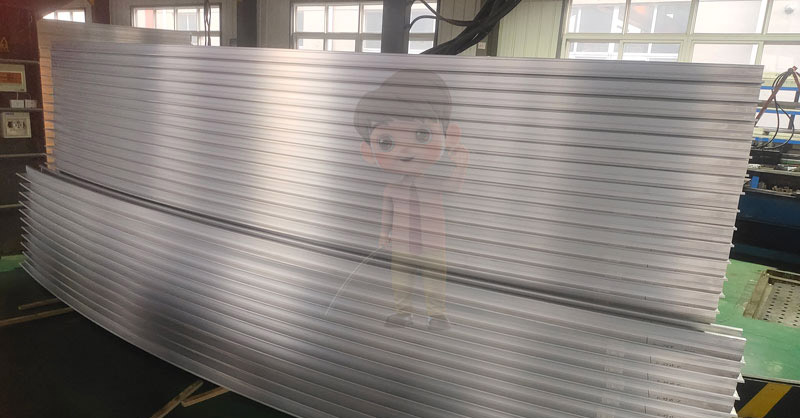Innovations in Door and Window Bending Processing: Key Techniques for Enhancing Product Quality
The door and window manufacturing industry has witnessed significant advancements in recent years, particularly in the area of bending processing. This crucial stage in production not only shapes the aesthetics of the final product but also influences its durability and performance. As manufacturers strive to meet the growing demand for high-quality, customized solutions, various innovations in bending techniques have emerged. This article explores some of the key techniques that can enhance product quality in door and window bending processing.
1. Advanced CNC Bending Machines
The advent of Computer Numerical Control (CNC) technology has revolutionized the bending process. CNC bending machines offer unparalleled precision and repeatability, allowing manufacturers to produce complex shapes with minimal error. These machines can be programmed to create intricate designs, enabling the production of customized doors and windows that meet specific customer requirements. Additionally, CNC technology reduces waste and optimizes material usage, contributing to both cost efficiency and sustainability.
2. Use of High-Strength Materials
The selection of materials plays a pivotal role in the quality of bent products. Innovations in material science have led to the development of high-strength alloys and composites that offer superior performance in bending applications. These materials not only improve the structural integrity of doors and windows but also enhance their resistance to environmental factors such as humidity and temperature fluctuations. Manufacturers that invest in high-quality materials can produce products that meet or exceed industry standards for durability and longevity.
3. Improved Tooling Techniques
The effectiveness of the bending process is heavily influenced by the tooling used. Recent innovations in tooling design, such as the development of specialized dies and punches, have significantly improved the bending process. These tools are designed to minimize stress concentrations and prevent material fatigue during bending, resulting in a smoother finish and reduced risk of defects. By utilizing advanced tooling techniques, manufacturers can enhance the overall quality of their products while minimizing rework and scrap rates.

4. Real-Time Monitoring and Quality Control
Incorporating real-time monitoring systems into the bending process allows manufacturers to ensure consistent quality throughout production. Advanced sensors can detect variations in material thickness, temperature, and bending angles, enabling immediate adjustments to be made. This proactive approach to quality control not only enhances product quality but also minimizes downtime and reduces the likelihood of producing defective items. Implementing such systems reflects a commitment to continuous improvement and customer satisfaction.
5. Automation and Robotics
The integration of automation and robotics into the bending process is another significant innovation that enhances product quality. Automated systems can handle repetitive tasks with high precision, reducing the risk of human error. Robotic arms can perform complex bending operations that require a high degree of accuracy, ensuring that each piece meets the exact specifications. Additionally, automation can significantly increase production speed, allowing manufacturers to meet rising demand without compromising quality.
6. Sustainable Practices
As environmental concerns become increasingly prominent, manufacturers are adopting sustainable practices in their bending processes. Innovations in recycling and waste management, along with the use of eco-friendly materials, are becoming more common. By focusing on sustainability, manufacturers not only improve their product offerings but also appeal to environmentally conscious consumers. This shift towards green manufacturing practices enhances the overall quality of products and contributes to a positive brand image.
The innovations in door and window bending processing are transforming the manufacturing landscape, offering new opportunities for enhancing product quality. By leveraging advanced technologies, high-strength materials, improved tooling techniques, real-time monitoring, automation, and sustainable practices, manufacturers can produce superior doors and windows that meet the demands of today's consumers. As the industry continues to evolve, staying abreast of these innovations will be crucial for manufacturers looking to maintain a competitive edge and deliver exceptional quality in their products. By prioritizing these advancements, the door and window industry can ensure a bright and sustainable future.
01
2025-11
Number of visitors:1
HOT NEWS
-
High-precision bending processing service: Automated bending process
2025-12-08
-
High-Accuracy Curve Forming: Achieving Consistent Bends in Aluminum, Steel, and Alloy Materials
2025-11-27
-
Advanced CNC Tube Bending Technology: Achieving Consistent and Reliable Precision in Complex Shapes
2025-11-17
-
From Design to Execution: How Profile Bending Transforms Architectural and Industrial Projects
2025-11-10




 English
English Chinese
Chinese Japan
Japan German
German

 LIST
LIST
